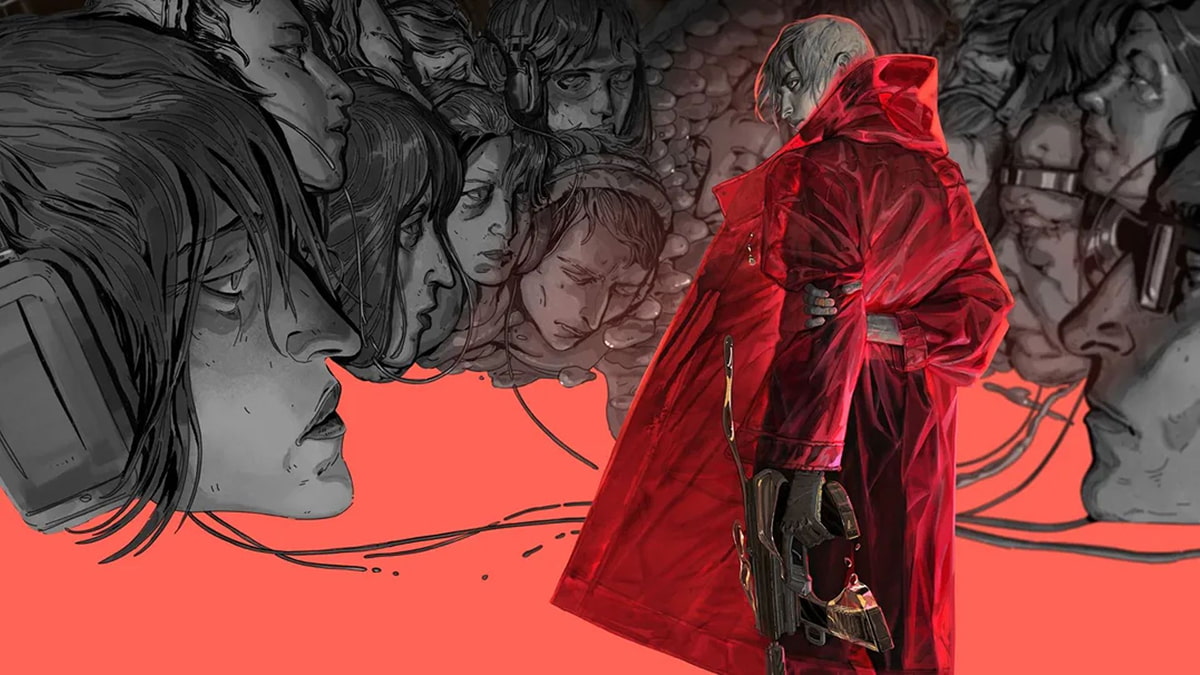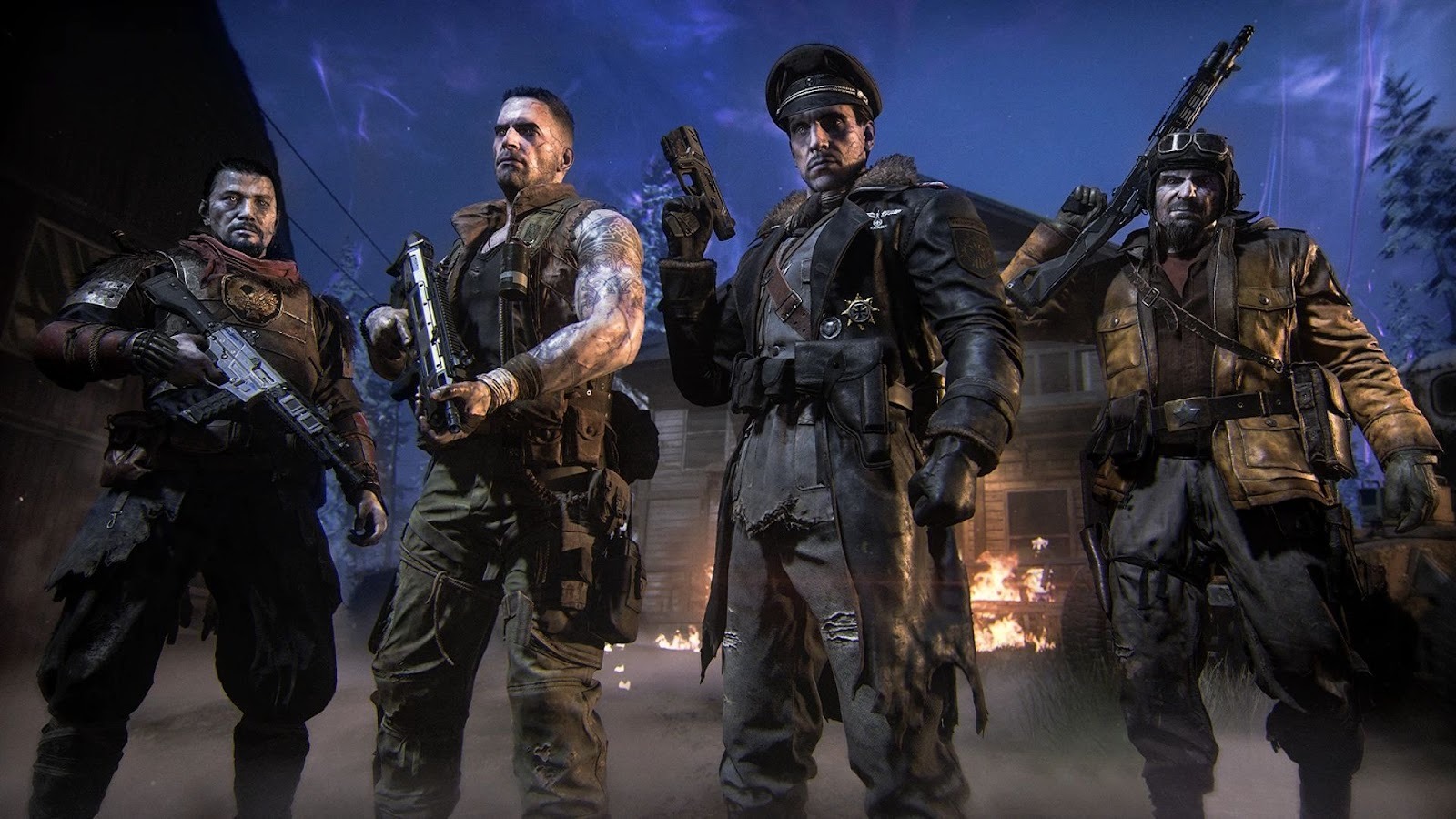You can trust VideoGamer. Our team of gaming experts spend hours testing and reviewing the latest games, to ensure you're reading the most comprehensive guide possible. Rest assured, all imagery and advice is unique and original. Check out how we test and review games here
When you think of burlesque you might think of Dita von Teese, corsets, stockings, of slow reveals, and hair styles that aren’t quite authentically 1940s but near as dammit; when you think of video games it might be Phil Spencer or Hideo Kojima, bright colours, explosions, self-referential t-shirts, and instant gratification for low attention spans. Setting aside any individual attraction to corporate frontmen you might have, video games and burlesque don’t seem terribly compatible.
Yet it’s Fanny Darling’s opinion that, actually, they are. A burlesque performer since 2012, and self-described as “Really into computer games!” I put to her the suggestion that burlesque and games aren’t a natural pairing. “I think it makes sense!” she said. “It does to me.”
I spoke to Fanny at Show Me Your Moves, “an evening of computer game burlesque” she’d organised under the troupe mantle Helles Belles Burlesque. The location was Secret Weapon, a themed pub in Stratford with walls lined equally with board games, PCs running Gang Beasts, and a collection of gaming art. The DJ was wearing a jumpsuit and playing chiptunes – 8-bit flavoured EDM/techno of a volume just on the edge of uncomfortable. Burlesque was very much on video games’ home turf, and the idea of something within six degrees of erotic happening on the stage seemed absurd. But it turned out that eroticism was not necessarily the point. “Some burlesque used to be making fun out of politics and current affairs, so this is kind of a similar thing,” Fanny explained.
While we tend to think of burlesque today as stripping but with more complicated pants, this wasn’t the case for the majority of its history. The burlesque of the now that was popularised in the 90s is technically neo-burlesque. The original burlesques of Victorian London were a kind of ensemble variety performance on topical themes, and featured women in male roles wearing tights. It’s gone from satirical theatrics to Dita von Teese sitting in a giant martini glass and squeezing bubbles over her bejewelled nipples. “There’s lots of different types of burlesque shows,” said Fanny. “But this is the kind of one I’m into. With this show I just wanted it to be extremely silly and fun.”
Thus the emphasis of the evening was placed on entertainment in general more than on tits being gotten out specifically. It was saucy, or possibly even bawdy, rather than being sexy, as one might expect from a woman who chose the stage name Fanny Darling for herself. Although skin was definitely exposed, all the routines featured daft props and playing the audience for laughs.
Aside from Fanny herself the show also featured Ray Rustle, a rarity on the burlesque stage by dint of being a dude (the technical term being ‘boylesque’). He told me that boylesque allows him to flex his creativity: “Makes a change from my day job, that’s for sure!” And what is his day job? “Lead software developer,” he replied, before laughing in a manner one could only describe as raucous. There were others: Marquissa Darq pretended to lay an egg for Angry Birds; BAVAAAR had made an elaborate Squidling headdress; Fey au Lait dressed as a Paperboy from the 1985 arcade game, and pulled rolled up copies of said dailies from her costume to hurl them at the audience, yelling “D’you want a fackin’ paper?!” The whole evening was shepherded by a lively compere who was a fan of double entendre. It was like a Carry On film if Barbara Windsor had played almost every role.
/https://oimg.videogamer.com/images/771f/burlesque_fey_au_lait.jpg)
Fanny thinks that, as games become increasingly accepted as a legitimate part of pop culture, this sort of thing will happen more often. “I kind of was trying to piece my head together, something about how video games is a new type of culture,” she explained. “People are beginning to realise computer games can make you feel something, that computer games are like a film. People do film themed nights like this, that’s why I think it can happen with games.” As an argument it makes sense. If burlesque has its roots in satirising popular culture then it would be a challenge to find a part of current culture more ripe for satire than games, and no opportunities for this were wasted. Even in the breaks the compere involved the audience in ‘analogue versions’ of classic games; the whole thing opened with an RPG text adventure that gently ribbed both the tropes of text adventures and the gentrification of North East London.
At the same time, Fanny prefers a kind of playful ridiculousness in her burlesque shows which most games have built into them already. Whilst a routine based on a David Cage game would, no doubt, be a gritty avant-garde award winner, for the most part games have a colourful, over the top bombast that can be packaged in a feather boa and sprinkled in glitter with minimal effort.
Interestingly, though, none of the performers chose a character noted for being sexy – Fanny Darling dressed as Solid Snake, not Quiet – which was probably for the best. Using video games as a theme in a kind of cabaret context made more sense; it’s hard to imagine a video game theme working in a serious routine (picture a performer dressed as Bayonetta earnestly peeling off a catsuit made of hair) in a way which wouldn’t make everyone involved feel a bit odd – it could be that games only pair well with Fanny Darling’s flavour of silly burlesque, rather than the Von Teese high glamour, though it would certainly be interesting to see the latter try it. It’s fair to say that games are often under scrutiny for being either too sexualised or not sexualised enough, and burlesque, to draw out another similarity between the two, is often subject to a similar one.
When I asked what the actual difference is between stripping and burlesque Fanny was clear that burlesque is stripping, and Ray, laughing again, just said “Pasties!”, but they both went on to clarify that burlesque has a little more to it, somehow. Burlesque is sometimes described as sexy, rather than sexualised (the broad definition being that ‘sexualised’ is something that happens to you, and ‘sexy’ is something you do yourself). “It’s an appreciation of the body form, and it’s an art, it’s not sleaze. That’s the only difference I can think of,” said Ray.
“A lot of people say in burlesque you have the control. I don’t always know if I believe in that, because in the end goal you are stripping…” Fanny said, almost thinking aloud, “Burlesque can be a lot more playful and tell a story.” These aren’t distinctions that everyone agrees with; a friend of mine refers to burlesque as “stripping for privileged white girls,” because burlesque is stripping as a hobby rather than out of any need. Yet at the same time there are dozens of strippers who are quite clear that they work in a strip club out of choice. The difference, really, seems to be that burlesque is basically stripping that doesn’t make people uncomfortable. It’s stripping gone mainstream, with awards shows and conventions, whose attendees pay up front rather than per item removed.
Despite the fact that he was in some ways the least traditional performer, Ray delivered the most traditionally burlesque routine of the night, based on Bubble Bobble, though he’d initially planned a reverse strip with a Link costume – classic games for classically inspired routines. He tied strings of balloons around himself and popped them one by one, using a lot of the same tropes and movements with his body that the female performers did. “There’s a lot of things that men can take from females. The whole corset reveal? Men can do the same thing with a jacket, or a shirt,” he told me. “It’s starting to make a big impact. People are starting to take more notice, you know, that it can’t only be women.”
/https://oimg.videogamer.com/images/bbe2/burlesque_ray_rustle.jpg)
The concept of an audience taking their cue from how the performer treats their own body extended to the whole of Show Me Your Moves. The performers only ever treated their bodies as something fun rather than, primarily, f***able (although this is a luxury afforded to you when you don’t need the audience to buy a lap dance afterwards), and it was difficult to not enjoy it. While there may be burlesque shows that market themselves as performance art, this was not one of them, just as there are games that have no designs on high culture. It’s not to say that everyone will like it, though; my husband almost cringed himself inside out, not because of the choreographed nudity, but because it felt more like a Butlins variety show and required the kind of naff buy-in he couldn’t give. The poor bastard almost left at the interval.
“You do kind of expect a lot,” Fanny admitted, talking about the need for buy-in, and constant whooping and cheering. In this case a strong knowledge of video games was presupposed up front. At one point in Fanny’s Metal Gear Solid routine she was distracted by a Playboy pinup, which was funny; it was funnier if you knew that they can be used as a distraction mechanic in game. Sometimes an audience won’t get it, as Fanny learnt from previous performances of the same routine. “There was just a lot of people ready for a f***ing gig and they were like ‘Why is this woman running around in a box?'”
But if the niche aspect of video game burlesque is what makes it inaccessible to some audiences it’s also what makes it work so well for others. “There’s a game that I do with burlesque that’s like: Why are you stripping?” Fanny said of her performances. “When you know computer game characters and you know the games you can start piecing together funny little stories as to why.” So video games, interactive, playful stories, are easily transposed into interactive, playful performances. By the end of the evening I was ready to believe video game burlesque kind of did work, even though it’s hard to reconcile. The KFC Double Down shouldn’t exist, but it does, and it doesn’t pretend to have any point to it: it’s a pseudo-sandwich of meat, and it exists because you f***ing love chicken and you’ll eat the s*** out of it in whatever format you’re offered, you slags, even if you secretly think you probably shouldn’t.
Show Me Your Moves was a KFC Double Down. It was obviously born from a love of the source material, and was guileless in it’s presentation, but you’d need to stay aware of the wider context in which you were consuming it. And is that not equally as succinct a description for games?
The performers themselves were irrepressibly likable and honest about their intentions. “I love being like ‘Come and see some titties! Come and have some fun!'” Fanny exclaimed, almost bouncing up and down in her seat. “It’s all in jest and it hasn’t got an agenda.” People love boobs and people love video games. At least, Fanny Darling thinks so.
All photos by Dario Villanueva






